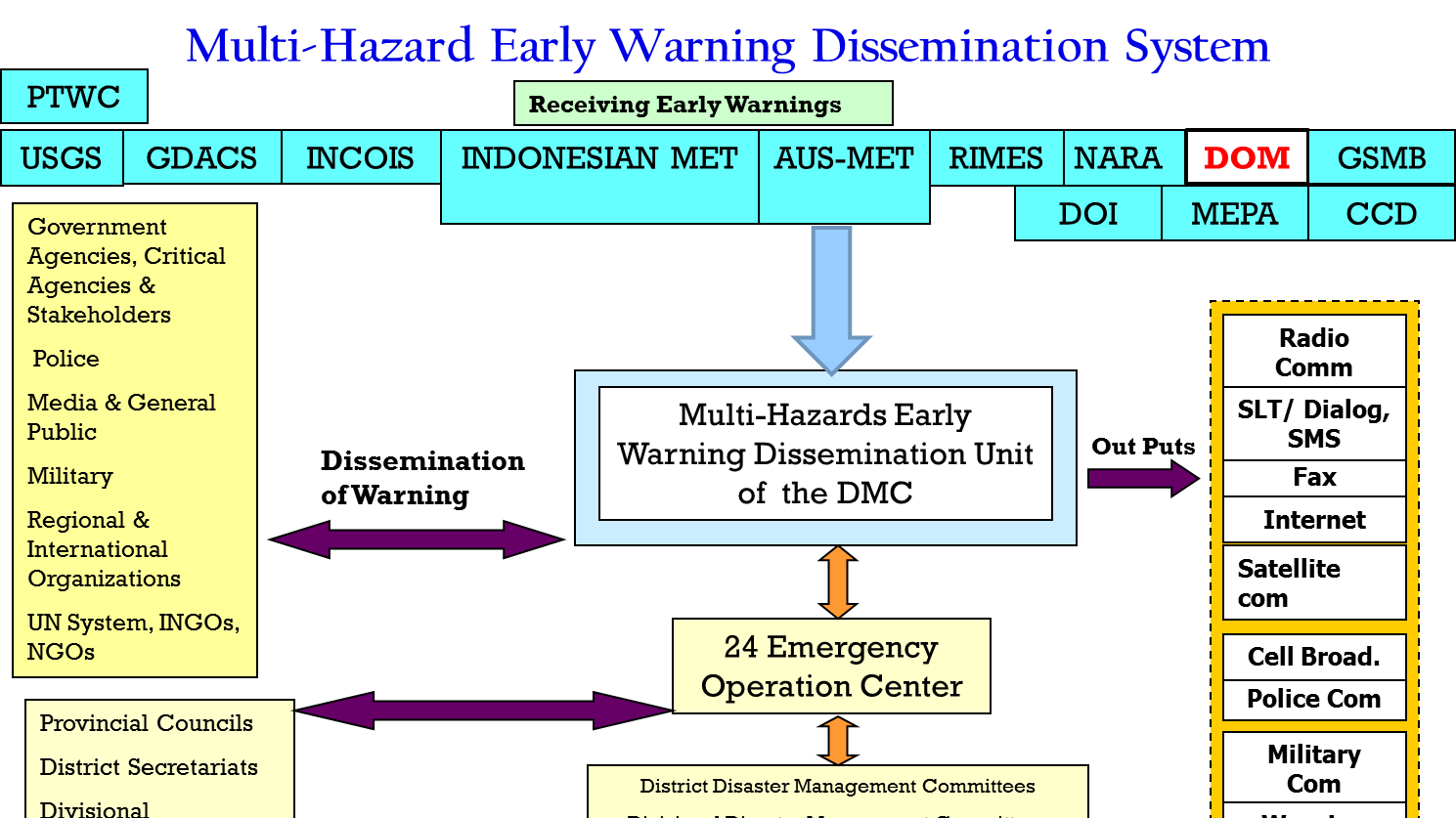The 2004 Indian Ocean tsunami that claimed the lives of 35000 of Sri Lankan people and displaced one in twenty has highlighted the critical importance of an effective National Early Warning System for Sri Lanka (NEWS:SL). Meeting this need, which has been discussed after each of our too frequent disasters such as the cyclones of 1978 and the floods of 2003, can no longer be postponed.
Warning is a crucial component of the overall risk management system that failed in the 2004 Indian Ocean tsunami. Warning allows people to act in order to prevent hazards from becoming disasters. Effective public warning saves lives, reduces economic loss, reduces trauma and disruption in society and instills confidence and a sense of security in the public. It is an important component of the foundation of a sound economy.
Recognizing the importance of the Warning system, Disaster Management Center (DMC) has established these guidelines to help people act in case of disasters.
Early warning System and Responsibilities
DMC will be the main focal point responsible for coordinating early warning, along with the relevant technical agencies and Technical Committees, its dissemination and for ensuring last mile dissemination of same. The Emergency Operations Centre of the DMC will be in constant coordination with all technical agencies responsible for natural and man-made hazards and in instances of any imminent disaster it will take action to inform the responsible officers for onward communication to the sub-national levels and communities.
DMC will be responsible for:
- Maintaining and operating Early Warning Towers and other early warning dissemination equipments.
- Dissemination of Early Warning Messages and ensure the receipt at remote vulnerable villagers.
- Co-ordination of donor assistance to strengthen capacity of technical agencies for early warning.
- Working out strategy and policy in the given area of activity.
- Initiating awareness on activities related to early warning among the various agencies and public.
- Guiding District Disaster Management Units in coordinating and implementing warning dissemination related activities in the Province, district, Local Authority, Division, Grama Niladhari and community levels.
Other Responsibilities
- Establish coordination with the local technical agencies responsible for forecasting different hazards,
- Establish a reliable communication system (telephones, radio communication etc.) from technical agencies to the Emergency operating Centre (EOC) and to Provincial / District Control Rooms directly or through (EOC)). Ensure redundancy by having alternative communication systems in place in case of breakdowns in the main system.
- Have the system established with media and ensure dissemination of information through same.
- Create awareness among communities and all concerned agencies on the communication system in use for early warning and what immediate actions to be taken, especially on rapid onset disasters.
Communication Systems for Early Warning Dissemination
The present system of communication from national level to district / divisional / local authority / Grama Niladhari levels or other specific identified locations is mainly through the Police and military communication systems, radio communication, multi-hazard early warning towers, media and the normal telephone systems. Alternative countrywide communication systems have already been established now and with these improvements, DMC ensure that there will be a mechanism to inform the vulnerable communities immediately. These include the Nation-wide Emergency Communication System, which will be used to provide information on:
- Impending cyclones, floods, landslides, epidemics, sea surges, tsunami and storms etc.
- Impending floods due to dam breach, rapid opening of sluice gates; dam & reservoir related floods
- Inundated areas, and closure of roads and bridges that have become impassable
- Evacuation routes and safe areas and etc.
